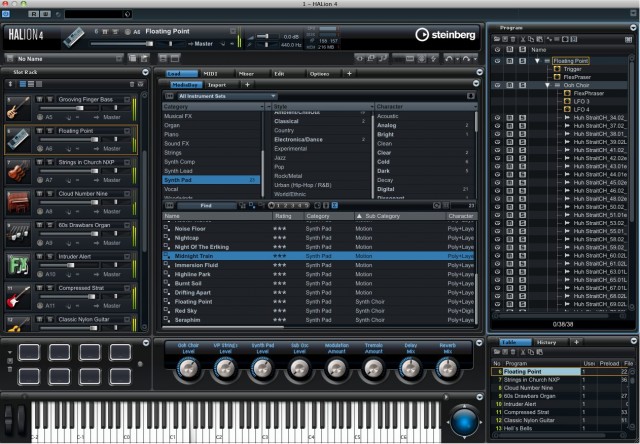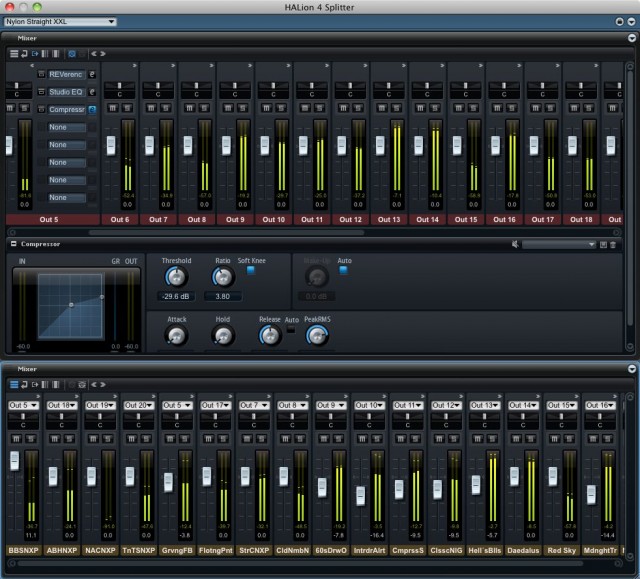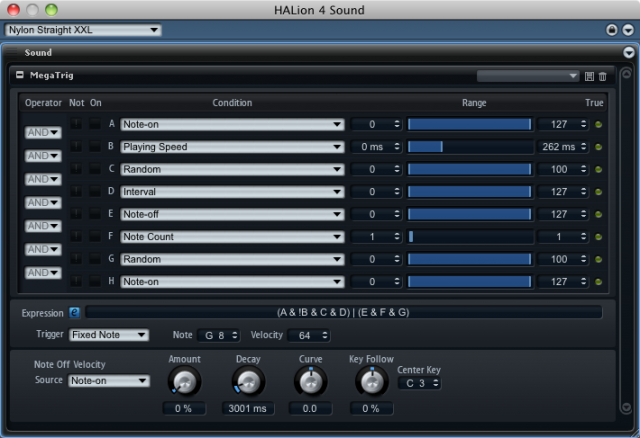Sampler? Synth? Workstation? Or just big bucket of sound? There are some impressive rabbit holes for sound designers out there, and Steinberg’s offering just got a big refresh.
While looking at the latest flagship from a music hardware giant (Roland’s Jupiter-80), it’s revealing to compare the software side of the fence. Computer software instruments may not be directly equivalent to all-in-one keyboards, but they do each embody the latest thinking in how to build expressive instruments and new sounds. German maker Steinberg is at home at this week’s giant Messe trade show, and they’ve taken the wraps off the upcoming landmark release of their own flagship synthesizer sampler workstation. It does … a lot.
HALion is really two instruments combined, both a virtual analog synthesizer and a sampler and sample playback workstation. The new version has dockable, movable, and resizable windows, function tabs, and screen sets – UI features generally associated with hosts, but necessary here to navigate HALion’s complex interface. There’s even a full-blown mixer desk inside.
The big change, though, is an expected one, bringing HALion in line with Steinberg’s latest ideas on what to do with VST plug-ins and sequencing. I looked at these features in my preview of Cubase 6’s note-by-note expression editing and VST 3.5. New features for adding expression to individual musical notes and sequences require updates to the associated plug-in software and sound content, so that’s where HALion comes in. Put the two together, and you have a better way of coupling stored sequence information with musical-style expression, whether modeling real instruments or storing transformations of sound parameters with synth sounds. The idea is to give sequenced music the same sorts of information about how sounds change across a note that a musical score might.
With or without those features, HALion 4 is full of sound design tools:
- A mixing engine with unlimited buses per program and layer and free routing – think DAW-like mixing inside each sound patch. Then route those to 32 stereo output channels or 6-channel surround. (Ow! My head!)
- Some 44 effect processors – this is before you drop HALion inside a DAW and add effects – including convolution reverbs, studio EQs, rotary cabinet emulation, morphing filters.
- Internal phrase arpeggiator.
- A new version of MegaTrig, which allows you to create series of conditions for triggers – basically, a graphical interface in place of the textual scripting in tools like rival sampler Kontakt.
- “Quick Controls” for mapping parameters to macro knobs, as we’ve seen in … well, many places. Your brain can keep track of 8 things more easily than it can 80.
- 15 GB of sound content.
- 32-bit and 64-bit versions for both Windows 7 and Mac OS X 10.6.
More images (click any of these for larger versions), all courtesy Steinberg:

And all of this costs you EUR349/GBP295, including VAT. US$329.99 retail in the US. (It’s cheaper because we’re less tax-y, folks.)
And that’s, really, kind of ridiculously cheap for a synth, a sampler, a mixer, a sound design toolset, and gigs of sounds, if you think about it. Lots more HALion here:
http://www.steinberg.net/en/products/vst/preview_halion_4.htm
Updated: Here’s a photo of MegaTrig – think Kontakt’s KSP scripting environment as a GUI. Which is more powerful? We’ll find out when HALion ships.




